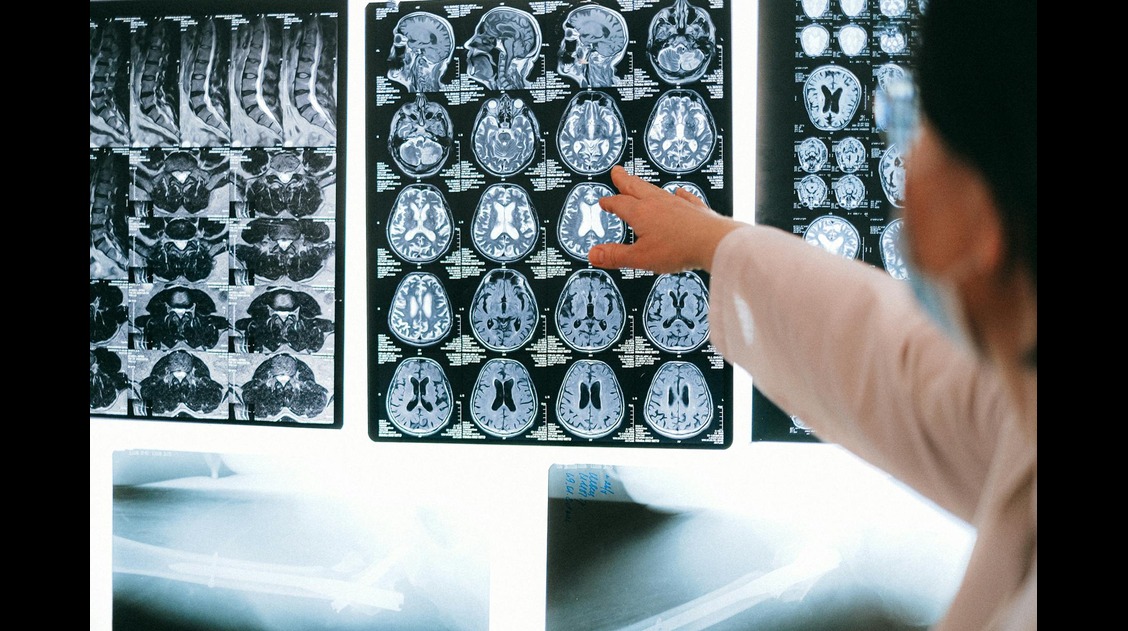
Does Brain Iron Accumulation Cause Brain Fog in Women at Perimenopause?
Iron is an essential mineral; it is present in all tissues in the body, where it plays various roles. Iron deficiency is the most common cause of anaemia, accounting for more than one billion cases worldwide in recent years. Women of reproductive age are more likely to be affected by iron deficiency than men due to the monthly menstrual cycle blood loss.
Monthly blood loss in women affects iron accumulation in tissues built up over a lifetime, as seen in men. There is currently a lack of research in this area to support whether the menopause transition causes an accumulation of iron build-up in tissues.
Researchers from the US recently published a study in the Open Access journal Nutrients, which investigated iron levels in the blood of women transitioning into menopause and their relationship to cognitive function.
Iron and the body
Iron is a major component of haemoglobin, which helps to transport oxygen from the lungs to the rest of the body. It is also an essential component of myoglobin, which stores oxygen in muscle cells, where it is needed for muscle contraction. Additionally, it plays a role in a range of metabolic processes. This includes being a vital part of enzymes responsible for energy metabolism. Iron is a cofactor for enzymes involved in energy metabolism, essential for ATP synthesis and energy production. It is also essential for other areas in the body, including maintaining and strengthening the immune system, hormone synthesis, DNA and amino acid synthesis, neurological function and cognitive function.
Iron accumulation and oxidative stress
Iron accumulation in bodily tissues is associated with ageing. The build-up of non-heme iron in brain tissue increases the risk of oxidative stress and cognitive decline and increases the risk of neurodegenerative diseases. Reactive oxidative species are formed when iron (Fe²⁺) reacts with hydrogen peroxide in the brain, where it acts as a signalling molecule. This produces hydroxyl radicals that can directly damage DNA.
There is currently a lack of data on changes in brain iron accumulation among women at perimenopause. However, many women in the menopause transition have reported brain fog as a common symptom. It’s suggested that an increase in iron accumulation in brain tissue may play a role in this symptom, furthering the need for research to better understand the behaviour of iron accumulation in relation to menopause and cessation of blood loss.
“When a woman makes the menopausal transition, she’s no longer losing blood on a monthly basis, which means she’s no longer losing iron. We wanted to see if the cost of being low on iron disappears during the menopausal transition. Very few studies have been done in this area.” – Professor Michael Wenger, author of the study.
Brain fog and iron accumulation
The researchers initially screened 521 women in two rounds. In the first round, they excluded 319 participants based on the exclusion criteria listed below.
The participants were excluded from the study if:
- They were not experiencing symptoms of menopause.
- Were pregnant or lactating.
- Receiving treatment for depression or iron deficiency.
- Do not have normal or normal-to-corrected vision.
- Do not have the ability to speak and read English.
- Do not have a BMI between 18 and 30.
In the second round, the researchers took blood samples and excluded 163 participants due to results not meeting iron levels or being in the targeted stages of menopause. The final data set included 27 participants.
The researchers took blood samples from the participants and analysed them to determine blood iron levels and menopause status. Following this, the researchers gave the remaining participants a magnetic resonance imaging (MRI) scan. This was to determine regional estimates of brain iron concentrations. The researchers focused on specific areas associated with age-related iron accumulation and declines in cognitive performance.
Cognitive analysis
The participant’s weight and height were taken to calculate BMI. They were then given four tasks to assess cognitive performance, which included a face/name associative memory task (FNAM). FNAM assesses episodic memory for the association of faces with names; it can detect the presence of mild cognitive impairment.
The researchers also gave the participants a probabilistic selection task (PST), which measures how individuals learn from positive and negative outcomes, which can be affected by variations in dopamine levels. Additionally, the participants also carried out a rule-based category learning task (RBCL), where individuals categorise items by applying a rule; deficits in RBCL have been documented in Parkinson’s disease.
The final task the participants were asked to complete was a visuospatial working memory task (VSWM); variations in performance on tests of this form of working memory can be related to variations in dopamine as well as age.
Perimenopause and cognitive function
The researchers identified positive relationships between levels of systemic iron and cognitive performance and brain function. This suggests that when women have sufficient levels of iron in their blood during the menopause transition, they perform better on cognitive tasks.
Women who reported lower expected levels of iron in the blood performed worse on measures of memory, attention and cognition. Furthermore, the researchers also identified that an appropriate level of iron in the blood did not cause an excessive accumulation of iron in brain tissue, reducing the risk of oxidative stress and neurodegenerative diseases. The researchers also noted that low iron levels in the blood during the menopausal transition could be the cause of brain fog symptoms.
“Importantly, the amount of iron in the blood did not predict how much iron was deposited in a woman’s brain. We have known for some time that the accumulation of iron in the brain is a risk factor for developing conditions like Alzheimer’s and vascular dementia,” he said. “These data were surprising and good news because it appears that having iron levels that are at or above what you should expect for your age does not mean you’re accumulating more iron in your brain.” – Professor Michael Wenger.
The researchers conclude that because the study took place during the COVID-19 pandemic, recruitment for the study wasn’t explored to its full potential. They suggest that follow-up studies need to be performed to include larger sample sizes and longitudinal designs.
“I feel like we’ve had a pretty good understanding of post-menopause health, such as watching for cardiovascular issues and osteoporosis, but we haven’t known as much about what to do during this in-between phase, and it’s actually way more bothersome to people,” said Dr Pamela Miles, M.D., author of the study.
If you would like to read more or submit research about iron and cognitive function, please see the Open Access journal Nutrients Special Issue: Iron and Brain Cognitive Function Across the Lifespan










